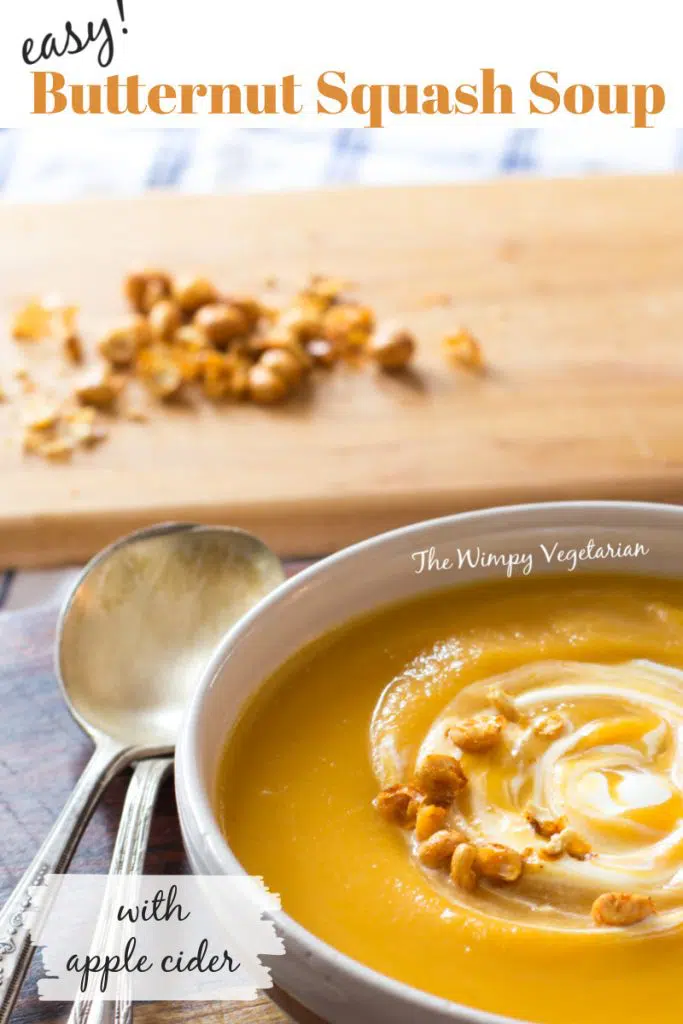
Want to Save This Recipe?
Enter your email & I'll send it to your inbox. Plus, get great new recipes from me every week!
When skies turn gray with thunderous clouds, and sleeting rain and snow chill my bones, I obsess over fall soups. A steaming bowl of broth and vegetables warms me up from the inside out.
I create new soups out of whatever vegetable is in season, but I have my favorites. They're a wonderful way to take advantage of season vegetables and fruits. Butternut squash in fall, beets in winter, strawberries in spring, and cantaloupe in summer.
If you'd like to create your own using your favorite seasonal vegetable, I have the 10 steps to making soup down below.
(Don't stress over the 10 steps - 4 of the steps are optional 😮💨. The optional steps indicate (generally) when in a recipe to add grains, beans, greens and cream if you're adding any of them to your soup. 🥳)
And if you just want a recipe you can dash into the kitchen and make, I've also included my 7 best fall soups at the bottom of this post that I go to over and over, through the fall and winter.
For a bonus, if you who have a meat lover in the family, I've included a chicken rice soup my husband loves. It has a couple surprising ingredients...

What Makes Fall Soups Special?
Unlike winter, fall is full of freshly harvested vegetables. Early fall has late season tomatoes and eggplant, while squash is in abundance in October and November.
With colder weather, we all naturally crave comfort food. Sometimes this craving unearths childhood memories of playing in the snow, followed by soup and grilled cheese sandwiches.
If you're light on protein that day, add a bit of healthy protein to every bowl, whether it's hemp hearts, nutritional yeast, ground flax seed, or collagen peptides.
It's easy to make a good soup! Most involve prepping some kind of vegetable, but little else is often required. In fact, many soups are barely a recipe.
Soup is a great way to use up odds and ends of vegetables in the refrigerator. Onion, shallots, garlic, celery and carrots are the best examples. Or add the last cubes of roasted butternut squash to a black bean soup. Fold in some roasted cauliflower you didn't eat last night into white bean soup, and purée it all together. Or stir half of the spaghetti squash you cooked in the air fryer earlier in the week into a mixed vegetable soup. The possibilities are endless.

How to Make Soup
Obviously, there's some variation depending on the soup, but these steps are a good rule of thumb.
1 ♨︎ Start with the pot you want to end up with.
It's nerve-wracking to realize, mid-recipe, that you need to transfer a simmering soup from a very hot pot to a bigger one.
I like to use 4 - 8 quart Le Crueset pots, depending on how much soup I'm making.
2 🔪 Prep the aromatics before starting to cook.
Aromatics provide a foundation of flavor for the broth, and include some combination of onions, carrots, celery, garlic and shallots. Sweet bell peppers, jalapeño and Serrano pepper are often included.
There are 2 ratios I typically use:
2 parts yellow onion to 1 part celery to ½ part carrot, plus a little garlic, OR
1 part yellow onion to 1 part red bell pepper to ½ part celery to ½ part carrot to ¼ part jalapeño or Serrano pepper
3 🧅 Sweat the aromatics to build flavor for the broth.
Warm oil or butter in the pot, add the aromatics, and stir to coat. Place a lid on the pot and cook until softened. Sealing the aromatics in with the lid allows them to steam and sauté with a full flavor. Depending on the size of the pieces, this typically takes around 15 minutes.
Prep the remaining vegetables while the aromatics sweat.
4 🧂 Spice it up.
Add spices and dried herbs in the final 5 minutes of sweating the aromatics. Adding them early allows the flavors to be absorbed more fully and evenly through the finished soup. This is especially true for salt being added to the soup. Chipotle pepper and smoked paprika both all a smoky depth to a soup. The amount is personal choice.
5 🍠 Use in-season produce, ideally locally grown, and add the broth.
Fruits and vegetables lose a significant amount of nutrition 24 - 48 hours after being harvested. So, go visit your local farmers markets for the freshest seasonal produce.
Roasting vegetables intensifies the flavors. This is especially true for vegetables with a mild flavor, such as cauliflower. But even roasting butternut squash before adding it to the soup broth makes a huge difference in the flavor of the finished soup.
Once the veggies are fragrant and begin to soften, add broth or water. Water has the advantage of being easy and it doesn't mute or mask flavors. Broth adds a depth of flavor to the broth. So if you don't plan to purée the soup, I recommend using broth - either Swanson's Vegetable broth or Better Than Bouillon.
As a rule of thumb, the longer the simmer, the more intense the flavors.
6 🍚 Add grains, pasta or pre-cooked beans (if applicable).
Adding grains, pasta or beans turns soup into a meal. I recommend pre-cooked beans if you're making some kind of vegetable soup. This is because dried beans typically take longer to cook than vegetables. Much longer. So, by the time the beans are cooked, even the aromatics are all spent. The exception is lentils, which cook much more quickly.
If you want to use both a grain and pre-cooked beans, add the grains first. Once they approaches al dente, add the pre-cooked beans.
7 🥬 Add greens and fresh herbs (if applicable).
Greens such as spinach and Swiss chard wilt quickly, and should be added towards the end of cooking. Hardier greens such as kale, mustard greens and collard greens need to cook longer and can be added with the other produce. If I add greens to a soup, I usually don't purée it.
8 🩸 Purée (if applicable).
Even if I choose not to purée a soup in my powerful blender, I still often partially purée it with an immersible blender. Particularly bean soups. Just a few whirls around the pot, and I'm done.
Note: Be careful puréeing potato soups as they can become gluey when over-processed.
9 🥛 Add a little cream (if applicable).
If you want a creamy soup, add coconut milk or cream, but don't bring it back to a boil. Just stir it in, and gently re-warm the soup.
10 🍋 Finish with a little acid.
Finishing with a little acid sharpens flavors. It can be dramatic, so this step is never optional for me. Lemon or lime juice are both great, as are sherry and sherry vinegar.
Equipment You May Need For Making Soup
Large heavy-bottomed pot, at least 4 quarts
My Favorite Fall Soups
And here are my favorite soups I make every autumn. Following that, I have links to side dishes that you can choose to serve with the soups.
Pumpkin Black Bean Chili (Instant Pot)
Vegan
Get the recipe here.
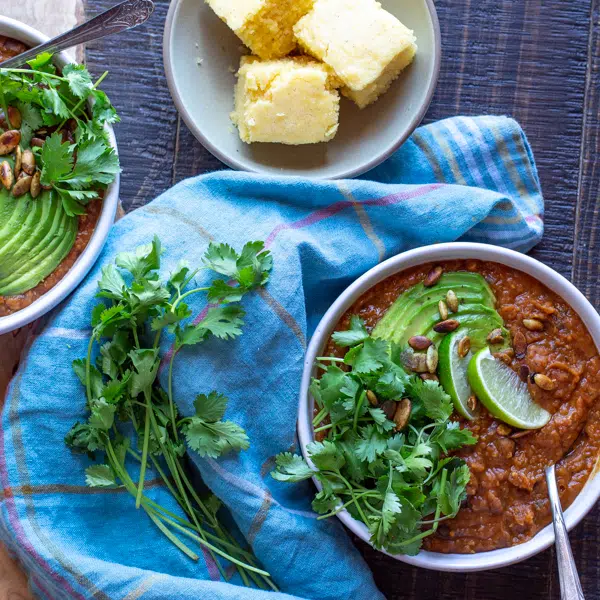
Roasted Eggplant Soup with Tomatoes
Vegan
Get the recipe here.

Butternut Squash Soup with Apple Cider and Crème Fraîche
Get the recipe here.
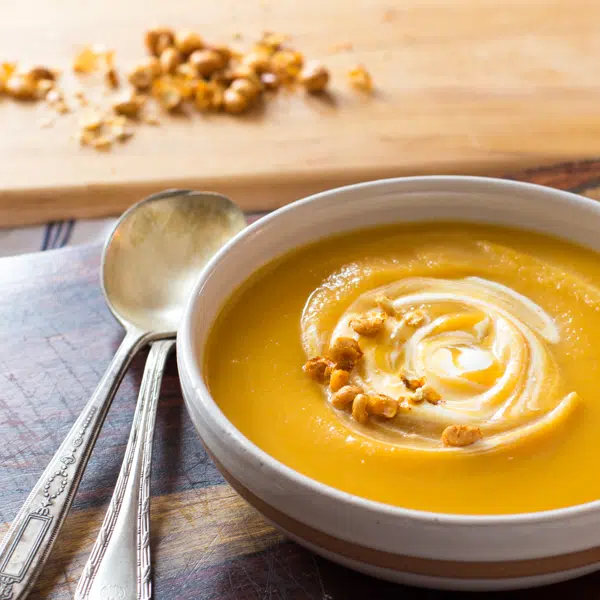
Potato Leek Soup with Hatch Chilis
Get the recipe here.
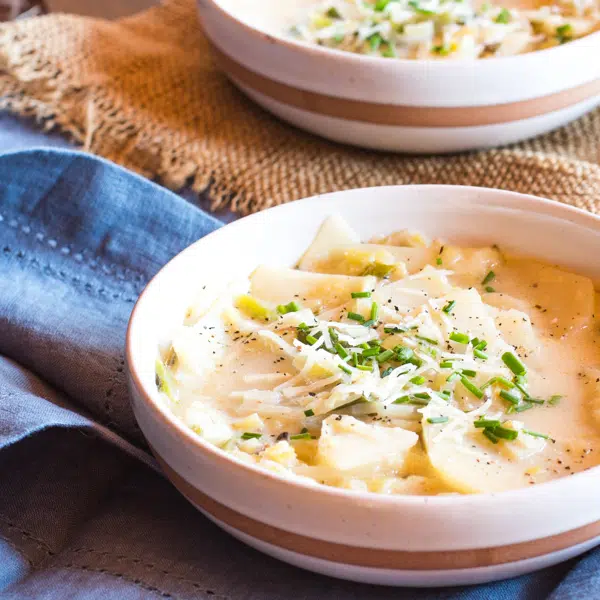
Barley Soup with Potatoes, Lime and Mint
Vegan
Get the recipe here.

Southwestern Black Bean Soup with Tomatillos and Corn
Get the recipe here.

Vegetable Soup with White Beans (Award Winning)
Get the recipe HERE.
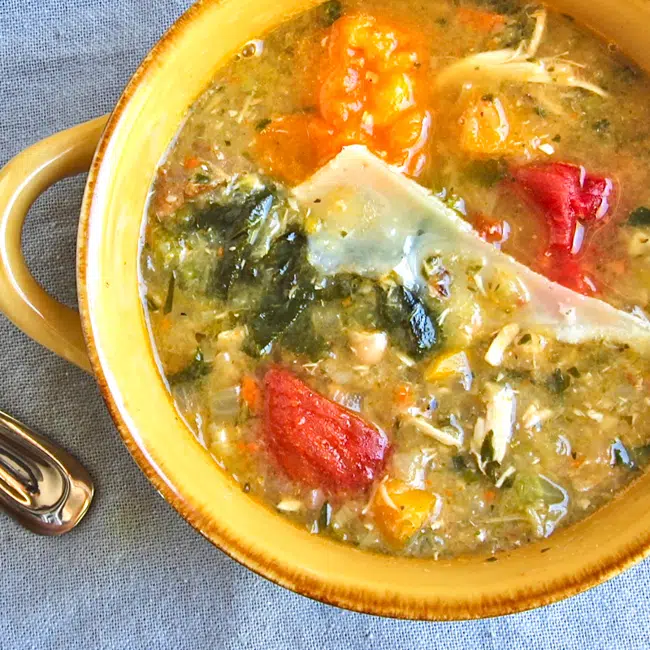
Chicken and Rice + Vegetables Soup
Get the recipe HERE.

Side Dish Ideas
If you need some ideas for sides to serve with these soups, here are a bunch to choose from!
SPICY SQUASH BOATS WITH FRUITY QUINOA PILAF
BEGINNER’S FRENCH ONION TART WITH MUSHROOMS
SESAME CRUSTED SWEET POTATO CAKES
DELICATA SQUASH AND APPLE GALETTE
VEGAN MARINATED ROASTED RED PEPPERS
BANG BANG CAULIFLOWER MAC ‘N CHEESE
CHICKPEA SPREAD FOR AVOCADO TOASTS
STUFFED ACORN SQUASH WITH CHARRED POBLANO PEPPER – CORNBREAD STUFFING
BROCCOLI CASSEROLE WITH CHEESE AND QUINOA
MEXICAN SWEET CORNBREAD (TOMALITO)
ROASTED TOMATO GRILLED CHEESE SANDWICH WITH HARISSA MAYONNAISE

Leave a Reply